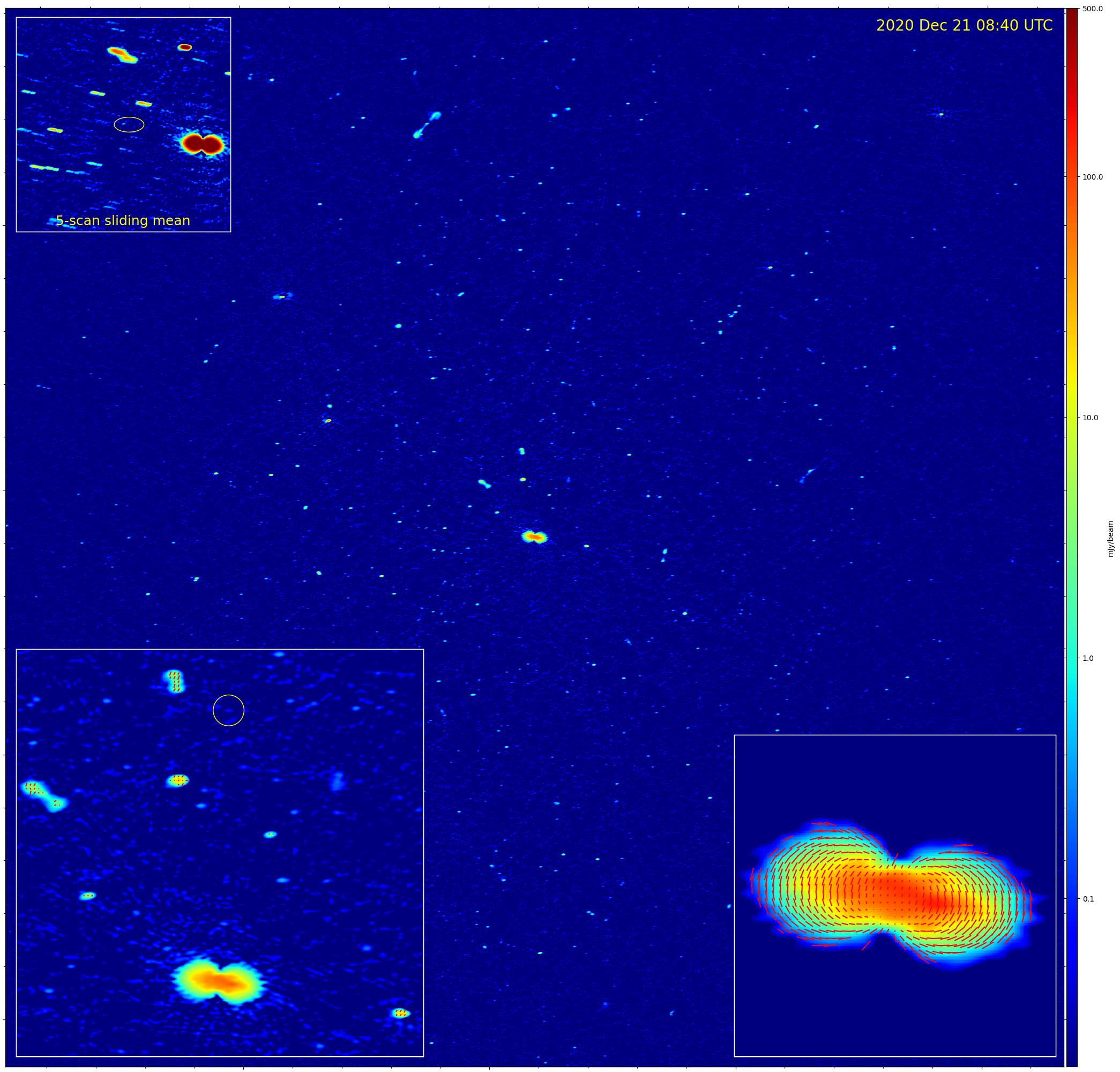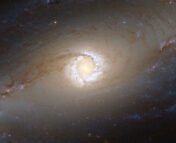Authors: O. M. Smirnov, B. W. Stappers, C. Tasse, H. L. Bester, H. Bignall, M. A. Walker, M. Caleb, K. M. Rajwade, S. Buchner, P. Woudt, M. Ivchenko, L. Roth, J. E. Noordam, F. Camilo
First Author’s Institution: Centre for Radio Astronomy Techniques and Technologies (RATT), Department of Physics and Electronics, Rhodes University, Makhanda, 6140 South Africa
Status: Submitted to the Monthly Notices of the Royal Astronomical society [open access , preprint on arXiv]
After building a new telescope or instrument on a telescope, an observatory usually undertakes “science verification” observations, which are intended to demonstrate the capabilities of the instrument and validate any automated steps (like data processing code) that are in place. For MeerKAT, a South African radio telescope array, science verification came around the same time as the 2020 Great Conjunction, where Jupiter and Saturn passed close to one another when viewed from Earth. Jupiter emits a lot of radio waves, due to its strong magnetic field, and solar system objects move quickly in the night sky when compared to distant background stars. Because of this, the observations of both Jupiter and Saturn presented an interesting challenge for the new telescope and its data processing code, and yielded an unexpected discovery.
MeerKAT’s wide field of view and sensitivity made its view of the Great Conjunction quite interesting. Since they expected Jupiter to be very bright, they took multiple observations over 9 hours, and combined these individual observations into a radio movie! In the background of the author’s movie of the Conjunction, you can spy two jets from the Active Galactic Nuclei (AGN) of distant galaxies. Saturn appears like a small blob, but Jupiter steals the show, with two huge lobes of emission that trace its massive magnetic field. The authors also observe an unusual radio transient, what they call a “pulsar with anomalous refraction recurring on odd timescales (PARROT),” a blinking source of radio emission.

Since Jupiter’s magnetic field, like the Earth’s, is tilted by about 10 degrees compared to its axis of rotation, and Jupiter rotates on a 10 hour day, the radio movie tracks almost a full rotation period. This allows us to see the magnetic dipole (the two blob shapes around the disk of the planet) wobbling as they spin around the axis of rotation. This super bright radio emission actually occurs because particles from the planet and its moon Io are pulled into the rotation magnetic field, and get spun up, producing cyclotron radiation.
Between Jupiter and Saturn, the authors also found a new source, whose characteristic blinking in radio emission identified it as a radio emitting neutron star, a pulsar. Unlike classical pulsars, however, this pulsar appeared to have strange bursts of light and quiet phases during the course of their observation. They called this object a PARROT for short, indicating the peculiar timescale and variability of its light (astronomers can’t get enough of these acronyms). The authors followed up this discovery with additional observations, and their most plausible explanation for the strange variability of this pulsar is that there is interstellar material between the Earth and the pulsar that absorbed some of the emission before it could reach Earth.
These MeerKAT observations of the Great Conjunction were important to test the capabilities of the observatory, which itself is a precursor for the Square Kilometer Array (SKA), slated for first light sometime in the late 2020s. Observatories like MeerKAT and the SKA will reveal a lot more radio transients like the PARROT, and it goes to show that even when you observe something familiar, you can find something new.
Astrobite edited by Junellie Gonzalez Quiles
Featured image credit: O. M. Smirnov et al. 2023, RATT Center




